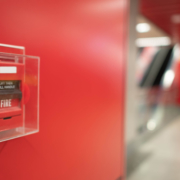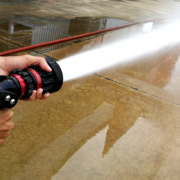Winter is Coming… Are Your Fire Sprinkler Systems Ready?
Did you know more fires occur during winter than in any other season? Additionally, cold weather can cause damage to fire sprinkler systems through freezing pipes.
So, what does this spike in fires and damage to fire protection mean for business owners? They must be more vigilant than ever during the winter season to properly protect their property and occupants.
The good news: You don’t have to have powers like Jon Snow to protect your fire sprinkler system from damage!
While building owners can take preventative measures, the most effective method to protect fire sprinkler systems during the winter is to keep up with regular maintenance and inspections – no battling White Walkers necessary! Let’s dive in.
Why Are Fire Sprinkler Systems at Risk During the Winter?
In the winter months, temperatures drop, which can cause water or condensation in pipes to freeze. This can result in the following effects:
- A frozen pipe can burst and lead to water damage, and/or
- Pipes with frozen water will not be effective in preventing a fire from spreading
Let’s discuss how building owners can prevent these risks from occurring in their wet and dry pipe fire sprinkler systems.
How to Protect Wet Fire Sprinkler Systems in the Winter
As the name suggests, wet pipe sprinkler systems hold water in their pipes. These systems are most common in structures such as offices and commercial buildings.
These buildings are often temperature controlled during the winter, meaning that the pipes are not likely to freeze.
However, simple issues – such as a problem with the building’s heating system or part of the pipe being exposed to low temperatures – can lead to the pipes freezing and significantly damaging the system.
Maintain Warm Temperatures
According to the National Fire Protection Association (NFPA) standard 25, wet sprinkler systems must be maintained at a minimum of 40 degrees Fahrenheit. This situation may occur when:
- Insulation is disrupted
- Pipes exit and reenter the building, or
- If there’s a lack of building heat
These occurrences may be more common in warehouses, for example.
Wet sprinkler systems may be common in buildings with unheated maintenance closets or equipment rooms. Building owners can open vents or doors to make sure that warm air is moving into these spaces to keep pipes from freezing.
How to Protect Dry Fire Sprinkler Systems in the Winter
Dry sprinkler systems keep pressurized air inside their pipes rather than water. Because of this, these systems can withstand freezing temperatures. However, this does not guarantee these systems will not be damaged.
Dry fire sprinkler systems can freeze if they are exposed to sub-32-degree temperatures. Moreover, condensation can collect over time and damage the pipes, especially during winter.
Dry sprinkler systems may be at risk in areas such as:
- Fire sprinkler control rooms
- Parking garages
- Outdoor event spaces
- Isolated rooms
- Unoccupied rooms, and
- Mechanical rooms
Inspect Drains and Low Points
Building owners can check drains and low points where condensation collects. Building owners can drain these points to keep the condensation from freezing and damaging their dry pipe sprinkler systems.
Inspect Pipe Angles
The angle of pipes is important to ensuring the condensation is reaching the low point drains. Building owners should enlist the help of an experienced technician to complete this step.
The Most Important Step… Inspection and Maintenance!
While building owners can complete the above steps to check in on their systems, the most effective method of preventing fire sprinkler systems from freezing during winter is to keep up with inspections and maintenance.
After all, your fire protection systems are only as effective as the inspections performed on them.
How Often Should These Systems Be Inspected?
How often you service or inspect your fire protection services depends on the device. Some systems require weekly, monthly, semi-annual, or annual inspections. However, all fire and life safety systems require at least an annual inspection.
Worried Your System is Being Damaged by Low Temperatures?
When systems or devices need maintenance, our team at VFS Fire & Security Services can typically send a repair technician to you within 24 hours—sooner in emergencies!
Not sure if you need servicing? Read on to learn more about how often fire protection systems should be serviced.
Does Your System Need an Inspection?
VFS Fire & Security Services wants to help with your winter maintenance. Fortify your building with reliable fire protection systems inspected and maintained by the experts at VFS!
Read on for more information about our testing and inspection services.














